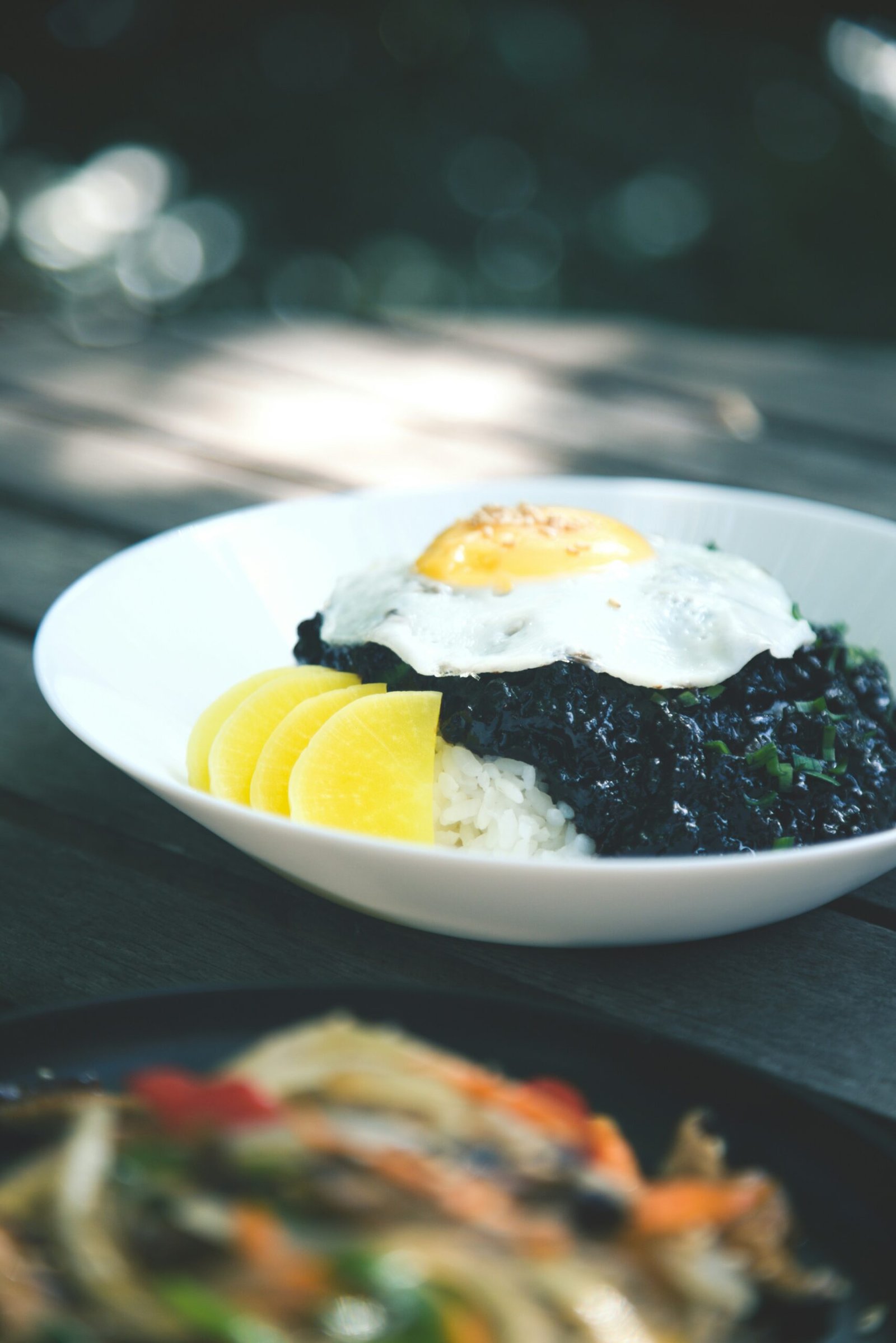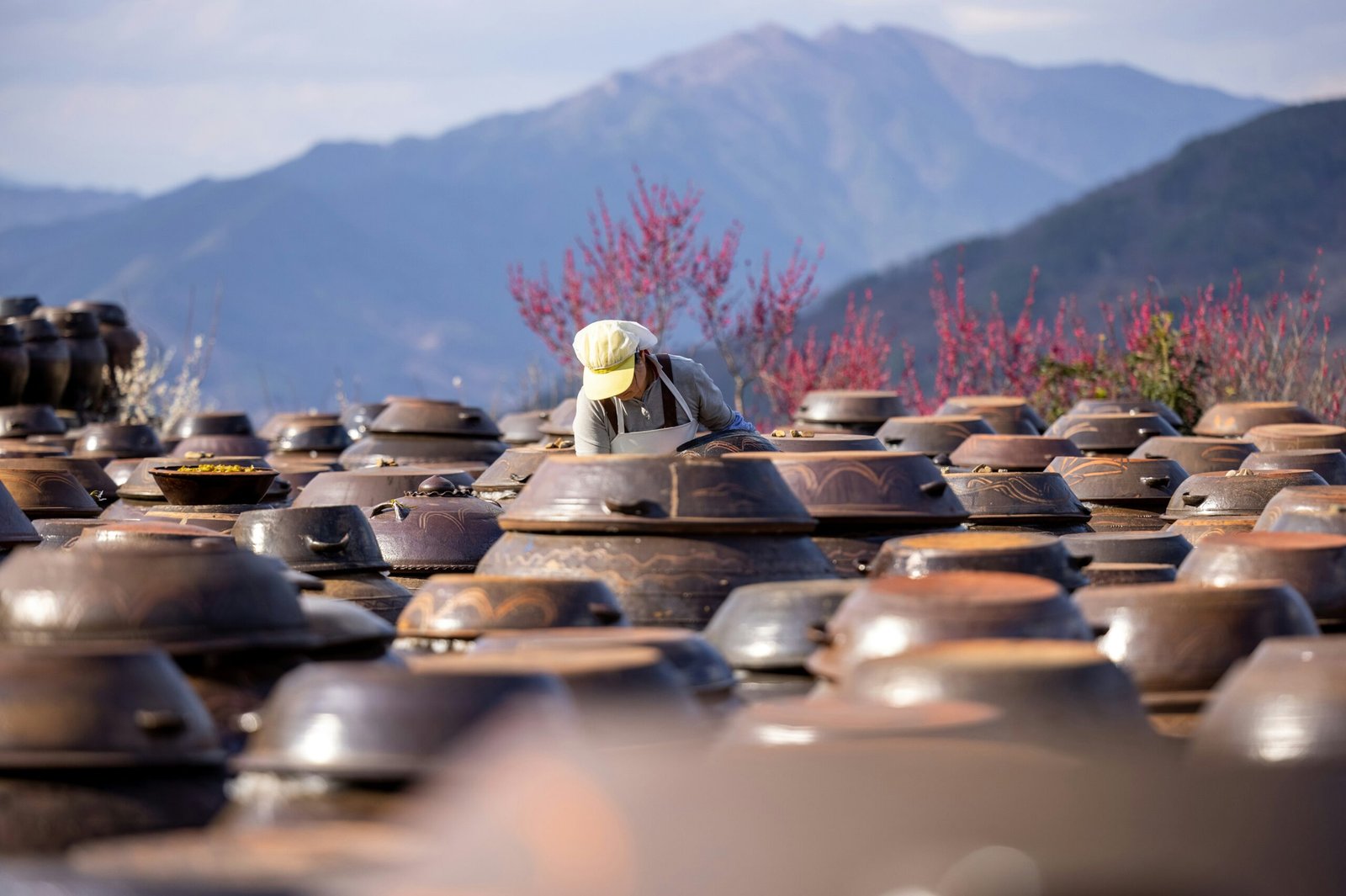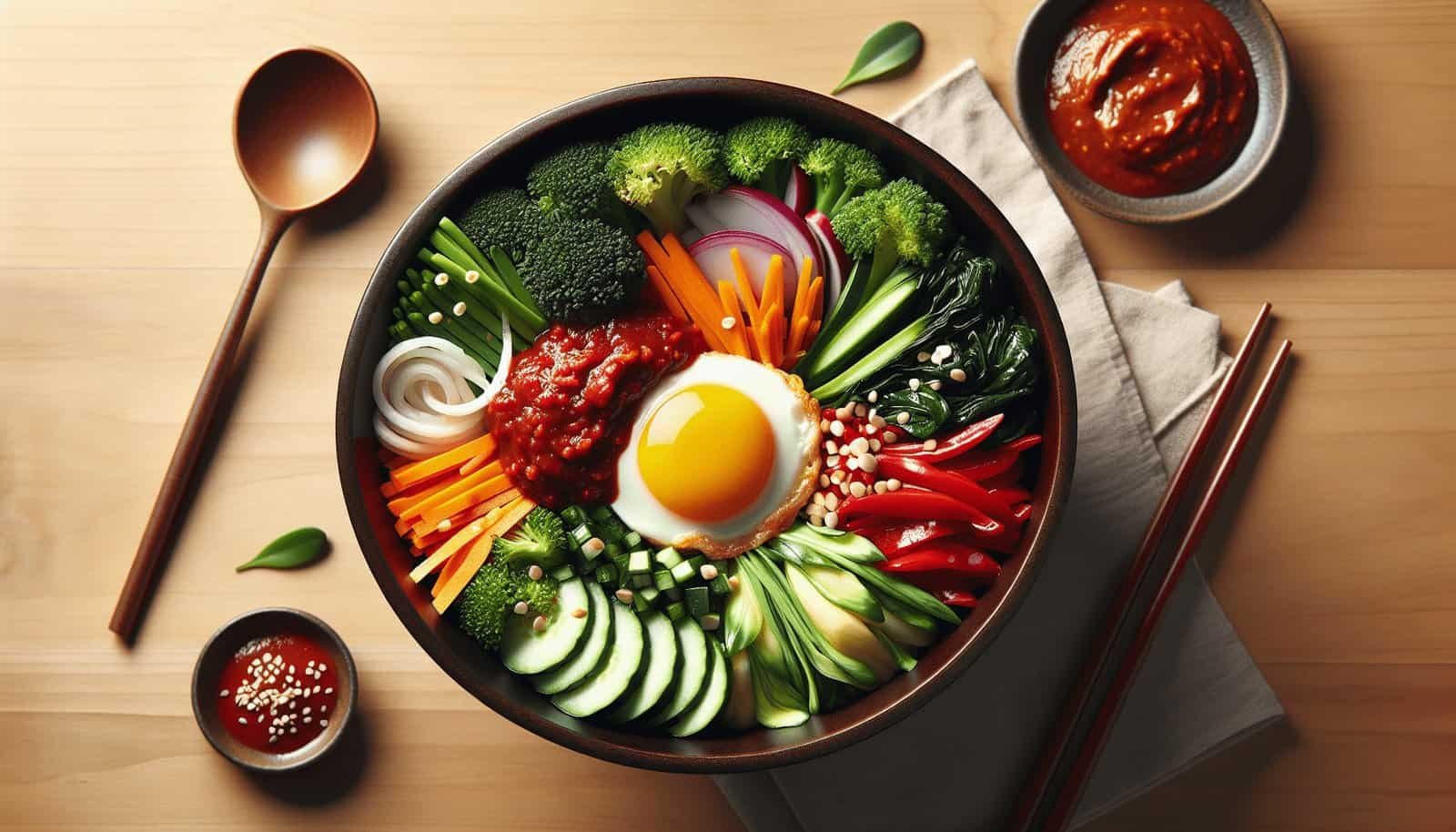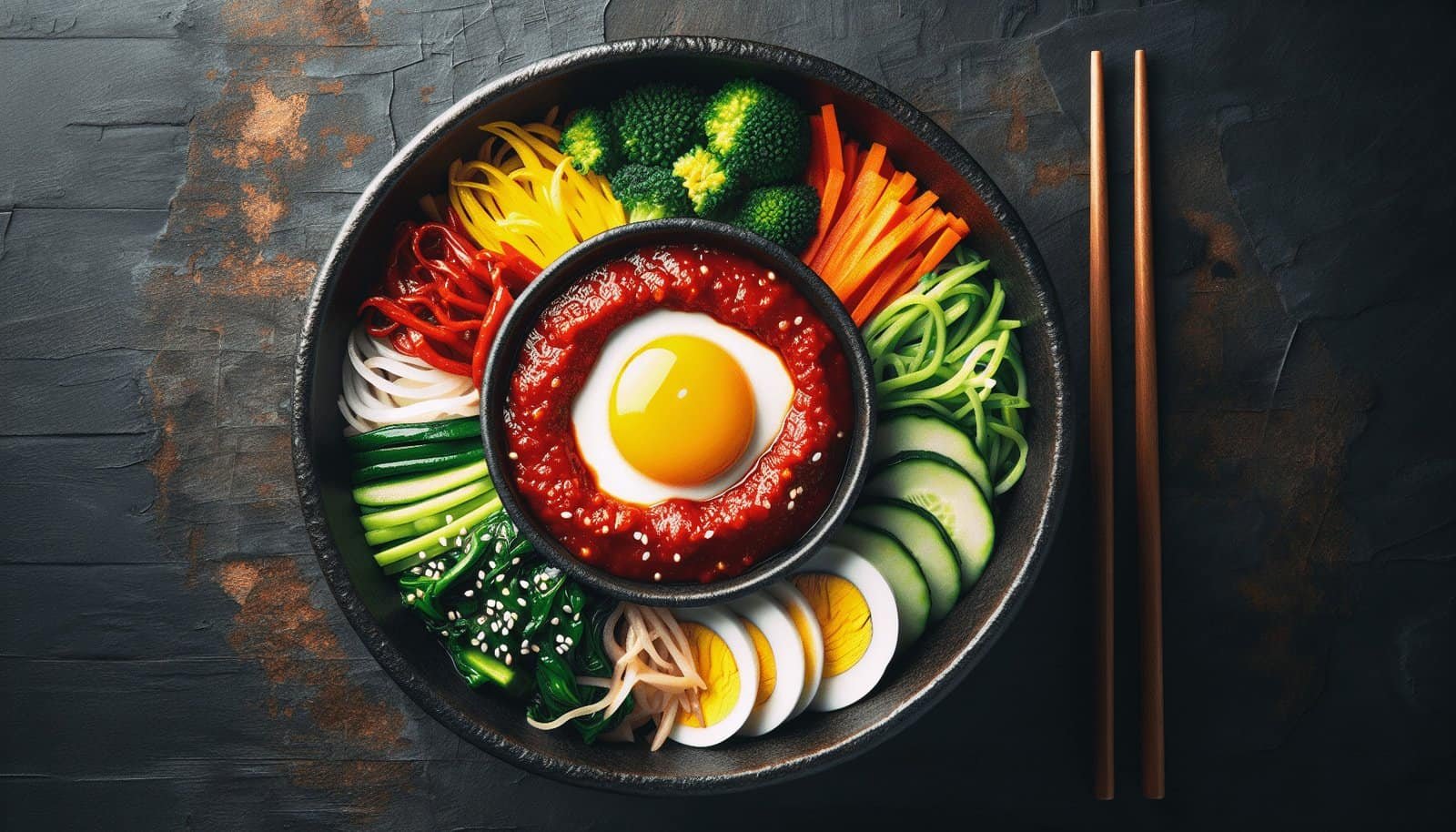In the article “What Are Some Traditional Korean Dishes That Highlight The Use Of Gochujang (red Chili Paste)?”, you’ll embark on a delightful journey through the world of Korean cuisine, where the spicy and flavorful punch of gochujang takes center stage. From the soul-warming comfort of Bibimbap, a mixed rice dish loaded with vegetables, meat, and a generous dollop of the fiery paste, to the rich, savory stew of Kimchi Jjigae, you’ll discover how this versatile ingredient elevates every dish it touches. Join in as you uncover how classics like Tteokbokki, with its chewy rice cakes drenched in a spicy red sauce, and the tender, flavorful Bulgogi, which often comes with a gochujang-based marinade, showcase the dynamic essence of Korean culinary traditions.
What Are Some Traditional Korean Dishes That Highlight the Use of Gochujang (Red Chili Paste)?
Have you ever wondered what makes Korean dishes so flavorful and unique? One of the key ingredients in Korean cuisine is gochujang, a red chili paste that adds both heat and depth to various dishes. Gochujang is not just a condiment; it’s a cornerstone of many traditional Korean dishes. But what are some of these dishes that truly showcase the brilliance of gochujang? Let’s dive into the delicious world of Korean cuisine and explore!
What is Gochujang?
Before we delve into the dishes, it’s essential to understand what gochujang is. Gochujang is a thick, savory paste made from chili powder, glutinous rice, fermented soybeans, and salt. Its flavor profile is complex: spicy, slightly sweet, and a bit umami. It’s not merely a hot spicy paste; it has a rich depth that enhances various dishes’ flavors.
Gochujang’s Role in Korean Cuisine
Gochujang’s versatile nature allows it to be used in multiple ways. It can be a base for sauces, a marinade, or a condiment added directly to food. Its rich, complex flavors make it a beloved ingredient across Korea. Now, let’s explore some traditional dishes where gochujang is the star.
Bibimbap (비빔밥)
Bibimbap is perhaps one of the most well-known Korean dishes globally. The word “bibimbap” translates to “mixed rice with meat and assorted vegetables.”
Components of Bibimbap
This dish is typically served as a bowl of warm white rice topped with sautéed and seasoned vegetables, a fried egg, and sliced meat, usually beef. The highlights, however, are the dollop of gochujang and the way you mix everything together before eating.
Key Ingredients
| Ingredient | Description |
|---|---|
| Gochujang | Adds spice, flavor, and moisture to the dish. |
| Rice | The base, usually white and sticky. |
| Vegetables | Such as spinach, carrots, bean sprouts, and more. |
| Meat | Often beef, but can be chicken or tofu. |
| Egg | Usually fried, adding richness and flavor. |
Preparation Tips
- Marinate the Meat: Use gochujang in the marinade to add extra flavor.
- Vegetables: Use a variety of colors and textures for aesthetic and taste balance.
- Mix Well: Ensure you thoroughly mix the gochujang with the other ingredients for an even flavor distribution.

Ddukbokki (떡볶이)
Another iconic Korean dish is Ddukbokki, also known as spicy rice cakes. It’s a beloved street food that features chewy rice cakes smothered in a spicy, slightly sweet sauce made from gochujang.
What Makes Ddukbokki Special?
Ddukbokki has a tantalizing combination of textures and flavors. The rice cakes are chewy, the sauce is spicy and sweet, and often fish cakes and boiled eggs are added to enrich the dish.
Key Ingredients
| Ingredient | Description |
|---|---|
| Gochujang | The key to the dish’s spicy sauce. |
| Rice Cakes | Cylindrical and chewy, absorbing the sauce well. |
| Fish Cakes | Adds a savory depth. |
| Boiled Eggs | Often included, offering a mild counterbalance. |
Preparation Tips
- Adjust the Heat: You can control the spiciness by adjusting the amount of gochujang.
- Consistency: The sauce should be thick enough to cling to the rice cakes but not too watery.
- Variations: You can add vegetables or even cheese for a different twist.
Kimchi Jjigae (김치찌개)
Kimchi Jjigae is a traditional Korean stew that features kimchi as its main ingredient, but gochujang plays a crucial role in enhancing its flavor.
Why is Kimchi Jjigae So Popular?
This stew is a comfort food in Korea. It’s spicy, savory, and perfect for cold days. The matured kimchi provides a robust base, while gochujang intensifies the flavors.
Key Ingredients
| Ingredient | Description |
|---|---|
| Gochujang | Adds heat and depth to the stew. |
| Kimchi | Fermented cabbage, the star of the stew. |
| Pork | Often used, adds richness and flavor. |
| Tofu | Absorbs the flavors, providing a soft texture. |
| Vegetables | Such as onions and mushrooms. |
Preparation Tips
- Cooking Time: Simmering the stew allows the flavors to meld beautifully.
- Pork: Using fatty pork can add more depth and richness.
- Tofu: Add the tofu towards the end to prevent overcooking.

Samgyeopsal (삼겹살)
Samgyeopsal, or grilled pork belly, is a popular Korean BBQ dish where gochujang commonly makes an appearance as a dipping sauce or in marinades.
The Allure of Samgyeopsal
Grilling meat at the table and wrapping it with assorted accompaniments in leafy vegetables is a communal and lively dining experience. The spicy, slightly sweet gochujang sauce pairs perfectly with the rich, fatty pork.
Key Ingredients
| Ingredient | Description |
|---|---|
| Gochujang | Used in dipping sauce or marinade. |
| Pork Belly | Thick slices that are grilled. |
| Vegetables | Such as lettuce, perilla leaves, and sliced garlic. |
| Side Dishes | Includes items like kimchi and pickled radishes. |
Preparation Tips
- Marinade: Marinating the pork belly in a mix of gochujang, garlic, and soy sauce can add extra flavor.
- Grilling: Cook until the pork belly is crispy and golden.
- Dipping Sauce: Mix gochujang with sesame oil and other condiments for a versatile dipping sauce.
Sundubu Jjigae (순두부찌개)
Sundubu Jjigae, or soft tofu stew, is another Korean comfort food where gochujang plays a crucial role. This steaming hot stew often includes seafood or meat and lots of vegetables.
What Makes Sundubu Jjigae Unique?
The dish’s star is the soft, uncurdled tofu, which melts in your mouth. Gochujang provides the familiar spicy, savory backdrop that enhances the dish’s appeal.
Key Ingredients
| Ingredient | Description |
|---|---|
| Gochujang | Central to the stew’s spicy broth. |
| Soft Tofu | Silky and soft, absorbing the flavors. |
| Seafood/Meat | Can include shrimp, clams, or pork. |
| Vegetables | Such as zucchini, mushrooms, and onions. |
| Egg | Usually cracked into the stew towards the end. |
Preparation Tips
- Broth: Start with a savory broth base before adding gochujang.
- Gradual Spicing: Gradually add gochujang to control the heat level.
- Soft Tofu: Add this towards the end to keep its texture intact.

Jjajangmyeon (짜장면)
While Jjajangmyeon is primarily known for its black bean sauce, a spicy version uses gochujang to add an extra kick.
What is Jjajangmyeon?
Jjajangmyeon is a noodle dish topped with a savory black bean sauce, usually accompanied by pork and vegetables. In the spicy version, gochujang complements the bean sauce perfectly.
Key Ingredients
| Ingredient | Description |
|---|---|
| Gochujang | Adds heat to the traditional black bean sauce. |
| Noodles | Usually thick and chewy. |
| Pork | Often diced and stir-fried. |
| Vegetables | Such as potatoes, onions, and zucchini. |
Preparation Tips
- Sauce Balance: Ensure the gochujang doesn’t overpower the black bean sauce.
- Stir Fry: Cook the pork and vegetables thoroughly to enhance flavor.
- Noodle Texture: Cook noodles until they’re perfectly chewy.
Bulgogi (불고기)
Bulgogi, or marinated beef, is often not associated directly with gochujang, but adding a bit of this paste can elevate its taste.
Understanding Bulgogi
Traditionally, bulgogi is made by marinating thin slices of beef in a mixture of soy sauce, sugar, sesame oil, garlic, pepper, and other ingredients. A touch of gochujang can bring a spicy note to this sweet and savory dish.
Key Ingredients
| Ingredient | Description |
|---|---|
| Gochujang | Optional but adds a spicy kick. |
| Beef | Thinly sliced, usually ribeye or sirloin. |
| Marinade | Soy sauce, sugar, sesame oil, garlic, etc. |
| Vegetables | Often includes onions and scallions. |
Preparation Tips
- Marination: Let the meat marinate for a few hours or overnight.
- Cooking: Cook quickly on high heat to avoid tough meat.
- Spice Level: Add gochujang according to your preference for heat.

Gochujang Jjigae (고추장찌개)
Gochujang Jjigae is a stew where gochujang plays a leading role, providing both the base flavor and the heat.
Why Gochujang Jjigae?
This stew is hearty and bold, featuring chunks of tofu, meat, and vegetables. The gochujang ensures every spoonful is packed with flavor.
Key Ingredients
| Ingredient | Description |
|---|---|
| Gochujang | The primary seasoning for the stew. |
| Tofu | Firm or soft, absorbs the stew’s flavors. |
| Meat | Pork or beef adds richness. |
| Vegetables | Such as zucchini, onions, and mushrooms. |
Preparation Tips
- Broth: Start with a flavorful broth, adding gochujang to taste.
- Balance: Taste and balance the flavors as you go.
- Simmering Time: Allow enough simmering time for flavors to meld.
Budae Jjigae (부대찌개)
Budae Jjigae, also known as “Army Stew,” originated during the Korean War using surplus foods from the U.S. military. Gochujang is a key ingredient in this hearty, eclectic stew.
What Makes Budae Jjigae Interesting?
This dish combines traditional Korean flavors with non-traditional ingredients like hot dogs, Spam, and baked beans. Gochujang ties all these elements together, providing a spicy and savory base.
Key Ingredients
| Ingredient | Description |
|---|---|
| Gochujang | Key to the stew’s flavor and heat. |
| Meat | Often includes Spam, hot dogs, or ham. |
| Kimchi | Adds a tangy, spicy flavor. |
| Vegetables | Such as mushrooms, onions, and garlic. |
| Baked Beans | An unexpected but traditional component. |
Preparation Tips
- Layering: Layer ingredients thoughtfully for even cooking.
- Simmer: Allow enough time for the flavors to integrate.
- Customization: Add ramen noodles or rice cakes to make it more filling.

Gochujang Chicken Wings
Gochujang Chicken Wings showcase the versatility of this chili paste in a delicious, crowd-pleasing form.
Why Gochujang Chicken Wings?
Combining gochujang with honey, garlic, and soy sauce creates a glaze that is both spicy and sweet, perfect for chicken wings that are crispy on the outside and juicy inside.
Key Ingredients
| Ingredient | Description |
|---|---|
| Gochujang | The base for the sauce. |
| Chicken Wings | The main component, usually fried or baked. |
| Honey | Adds sweetness and balances the heat. |
| Garlic | Enhances the overall flavor. |
| Soy Sauce | Adds a salty umami note. |
Preparation Tips
- Glaze: Mix gochujang with honey, garlic, and soy sauce for a perfect glaze.
- Cooking Method: You can fry or bake the wings before tossing them in the sauce.
- Serving: Garnish with sesame seeds and chopped scallions for an extra flair.
Gochujang Fried Rice
Gochujang Fried Rice is a quick and simple dish that brings together the depth of gochujang with everyday ingredients.
The Beauty of Gochujang Fried Rice
This dish is versatile and can incorporate various leftovers, transforming them into a delicious meal within minutes. The gochujang brings a robust flavor to the rice, making it anything but ordinary.
Key Ingredients
| Ingredient | Description |
|---|---|
| Gochujang | Infuses the rice with its spicy, deep flavor. |
| Rice | Preferably day-old, for better texture. |
| Vegetables | Such as carrots, peas, and onions. |
| Protein | Can be chicken, beef, tofu, or even shrimp. |
Preparation Tips
- Day-Old Rice: Use day-old rice for the best texture.
- Stir-Frying: Stir-fry quickly on high heat to avoid sogginess.
- Garnish: Top with a fried egg or chopped green onions for extra flavor.
Gochujang Marinades
Lastly, gochujang is an excellent base for marinades, transforming simple ingredients into something extraordinary.
Why Use Gochujang Marinades?
Gochujang-based marinades can be used for all kinds of proteins, including chicken, pork, beef, and even seafood. The marinade typically includes gochujang, soy sauce, garlic, ginger, and a sweetener like sugar or honey.
Key Ingredients
| Ingredient | Description |
|---|---|
| Gochujang | The star of the marinade, providing heat and depth. |
| Soy Sauce | Adds saltiness and umami. |
| Garlic | Essential for aroma and flavor. |
| Ginger | Adds a fresh, spicy note. |
| Sweetener | Balances the heat and saltiness. |
Preparation Tips
- Marination Time: Allow enough time for the marinade to penetrate the meat.
- Balance Flavors: Adjust the sweetness and heat to your preference.
- Cooking Method: Grill, bake, or stir-fry the marinated meats for best results.
Conclusion
There you have it—an extensive dive into traditional Korean dishes that highlight the wonderful use of gochujang. From iconic Bibimbap and spicy Ddukbokki to comforting stews like Kimchi Jjigae and easy, everyday meals like Gochujang Fried Rice, the versatility of gochujang is genuinely exceptional. By incorporating this flavorful chili paste into your cooking, you’re sure to enjoy a fantastic array of Korean culinary delights. Enjoy cooking and savor every bite!
